Marriage is one of the seven sacraments of the Catholic church, signifying its importance in the life of a Catholic person. According to Augustine of Hippo, sacraments are “an outward sign of an inward grace that has been instituted by Jesus Christ.”
Wedding ceremonies with or without Mass have several differences in their structure that ultimately lead to their difference in duration. Choosing whether to hold a Mass during your wedding ceremony depends on you and your partner’s preferences and religious affiliations.
Catholic Wedding Ceremony Without Mass
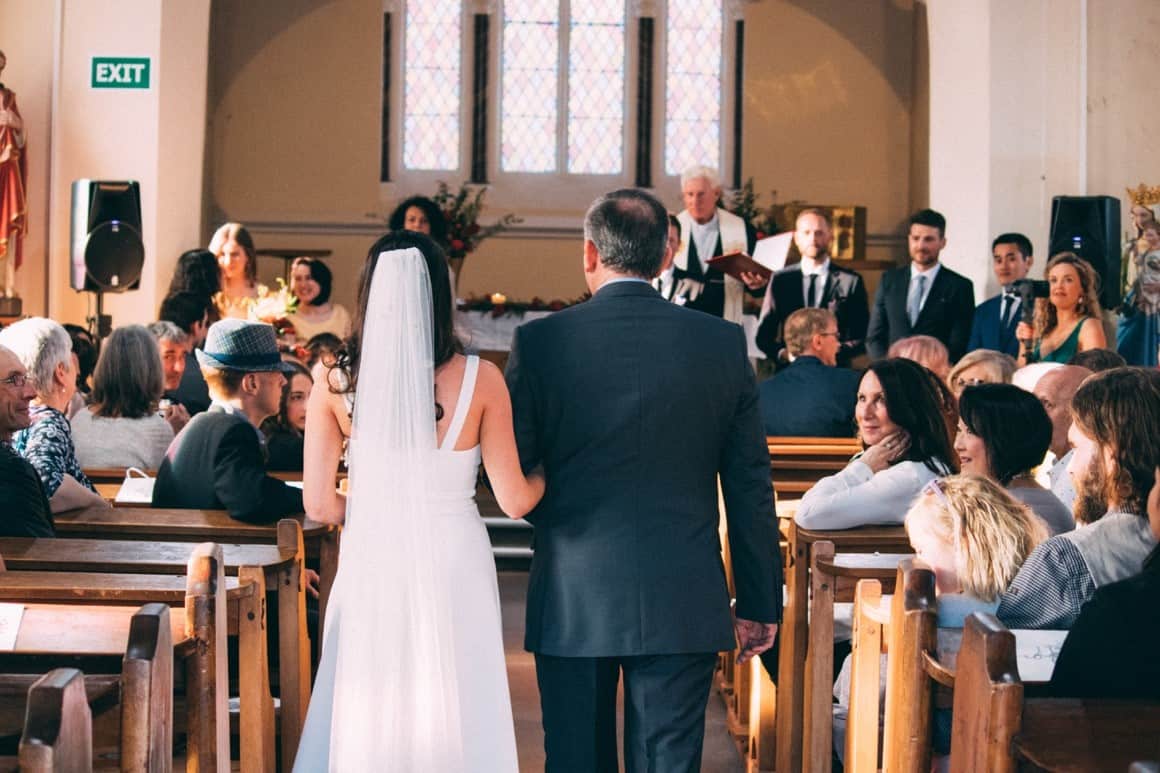
A wedding ceremony with only the Rite of Marriage itself may take 30 up to 45 minutes. Before the actual ceremony starts, prelude music may be played as the other guests enter. All in all, a wedding ceremony without Mass has x parts:
The Procession
The groom, along with his best man, enters from the side of the church. They are followed by the bridesmaids and groomsmen, often in pairs. The maid-of-honor makes her entrance alone. The bride is the last to walk down the aisle, escorted by her father or another male relative.
The guests, having been seated before the procession began, usually stand to welcome the bride as she walks down the aisle. In a moment called “giving away the bride,” the father — or whoever escorted the bride — hands her over to the groom. The guests may sit down once the bride is already at the altar. It is the officiant’s responsibility to signal them when to stand and sit.
Music is an important aspect in processions; processional music marks the beginning of the wedding ceremony. Typically, one song is dedicated entirely to the moment the bride is walking down the aisle.
The Invocation
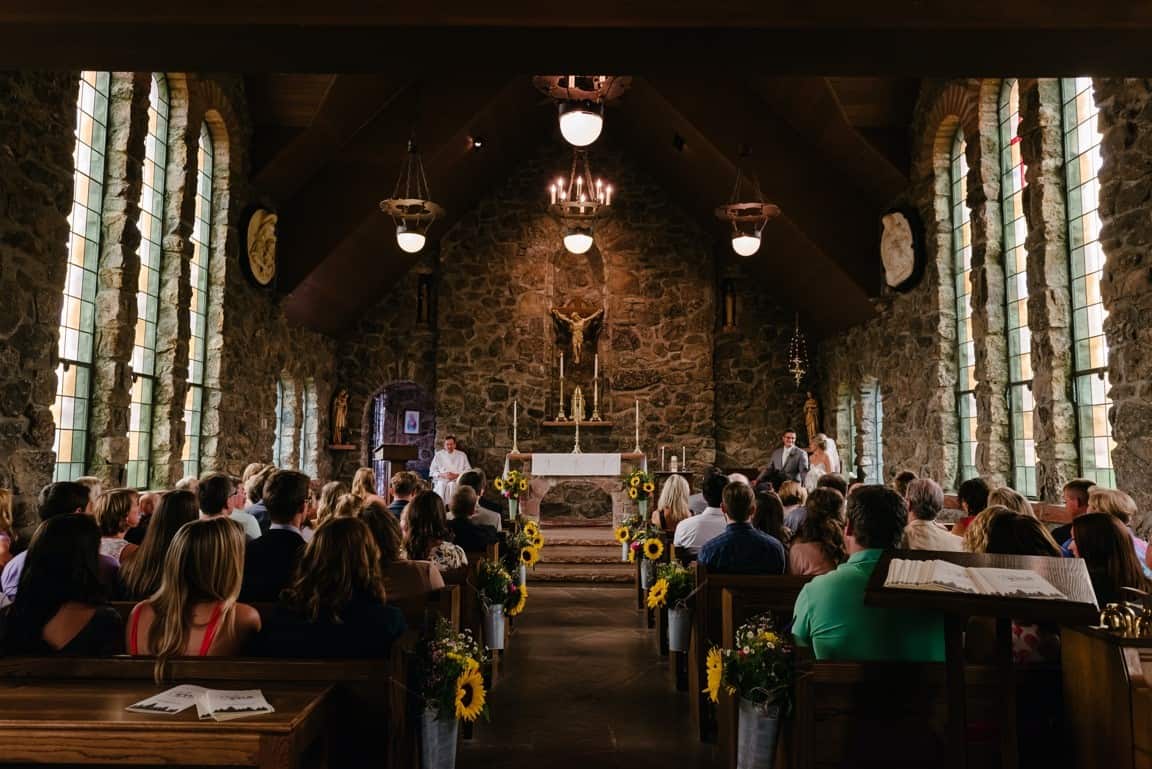
The invocation begins with the priest’s or officiant’s greeting to the attendees. They are welcomed with words such as “Dearly beloved and honored guests…”
The couple is then introduced to the wedding reception, typically with a “We are gathered here today to witness the union of (name of groom) and (name of wife) . . .” or a variation of it. After, the priest or officiant will declare the purpose of the gathering with “. . . in holy matrimony.”
Though optional, another part of the invocation is where the priest or officiant asks the guests if anyone present has any reservations about the couple’s marriage. This is best known as the phrase “Speak now, or forever hold your peace.” Today, this is mostly a rhetorical question, and grounds for objecting to a marriage should be backed by a legal reason.
An opening prayer is then led by the priest, dedicating at least one of many prayers for the couple.
The Liturgy of the Word
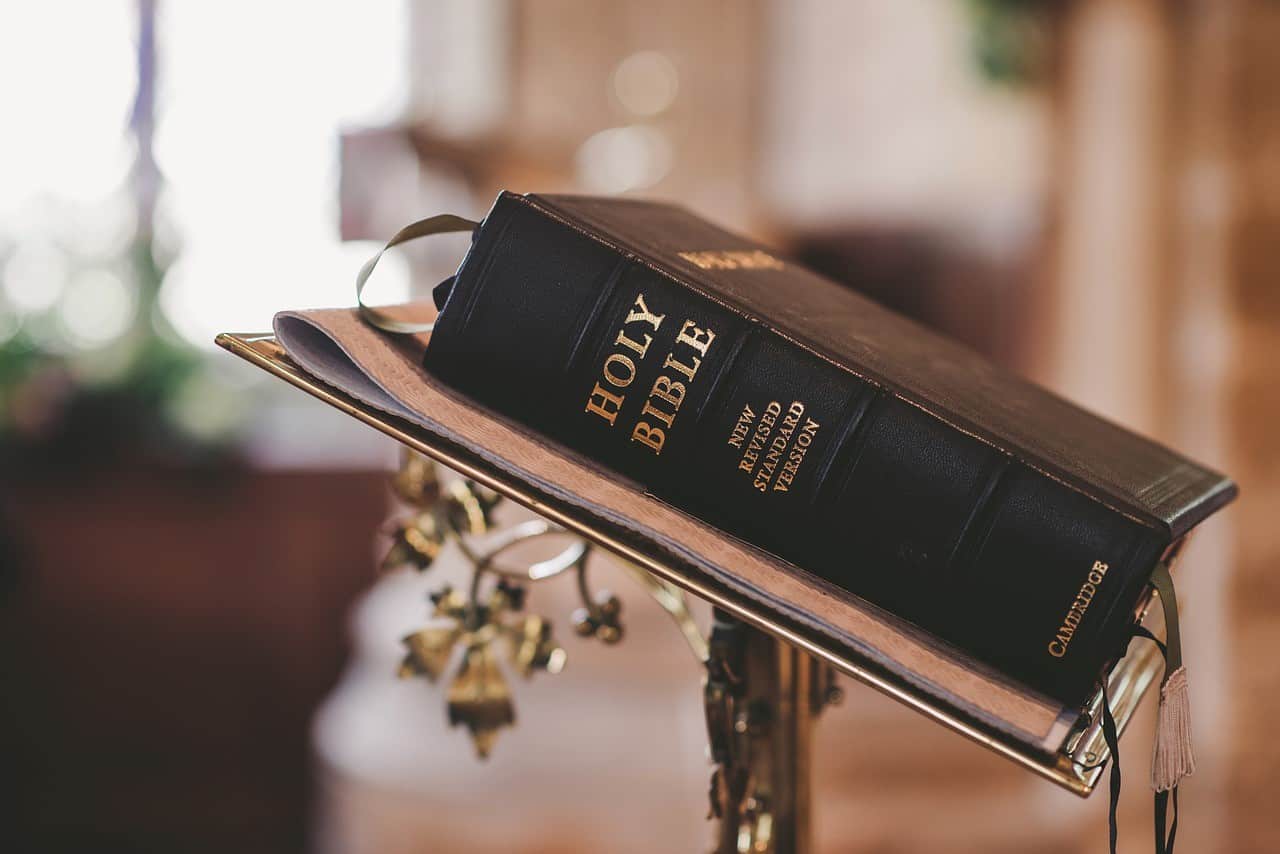
The Liturgy of the Word is the portion of the Mass dedicated to the Word of God. Passages from the Old and New Testaments will be read and lectured. It has six parts:
- First reading – consists of passages from the Old Testament. After the reading, the lector will say “The Word of the Lord,” to which everyone will respond, “Thanks be to God.”
- Responsorial Psalm – a Psalm will be recited or sung by the choir or cantor, and everyone will sing a response.
- Second reading – consists of passages from any book in the New Testament except the Gospel. Similar to the first reading, it is concluded by the lector with “The Word of the Lord,” and everyone will respond with, “Thanks be to God.”
- Gospel acclamation – everyone will rise, after which the cantor will lead everyone in singing the Gospel acclamation, which is usually the Alleluia.
- Gospel – the priest or officiant will read a passage from the Gospel. It will be concluded with “The Gospel of the Lord,” to which everyone will respond with, “Praise to you, Lord Jesus Christ,” then sit.
- Homily – the priest will explain and provide insight into the previous readings. In the context of a wedding ceremony, the homily will usually be about marriage and the Catholic values that form its foundation.
The Celebration of Matrimony
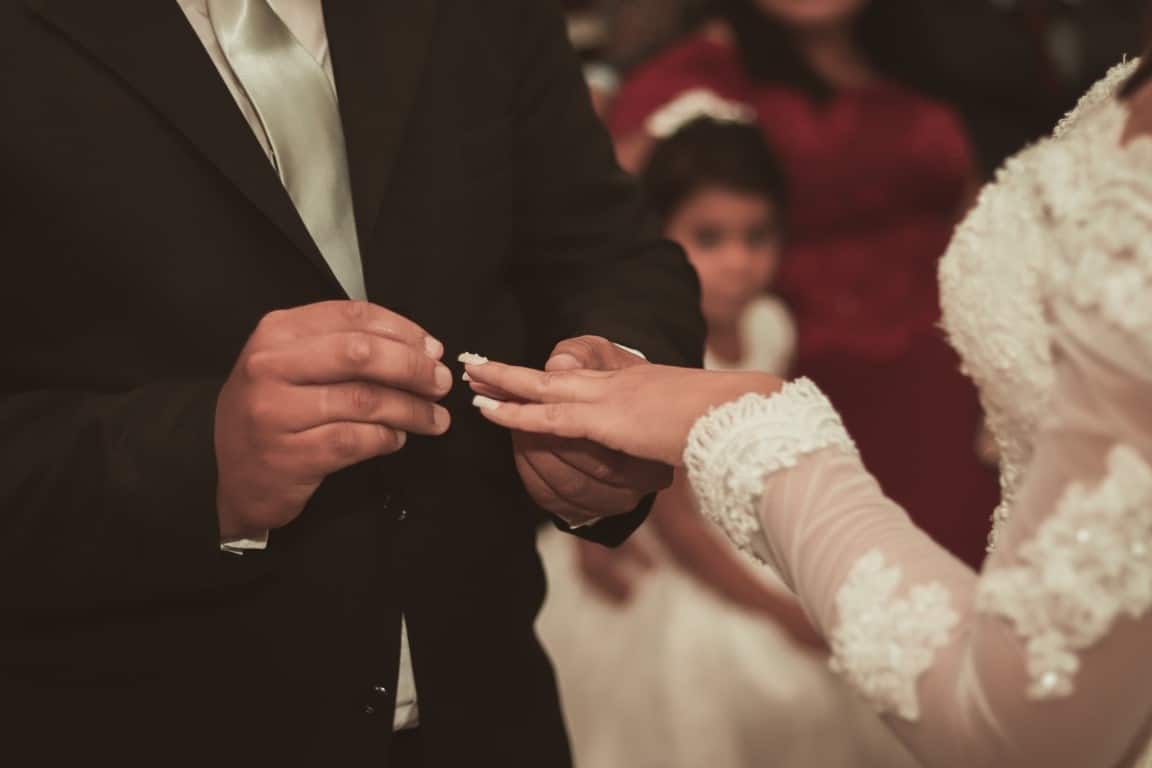
This is also known as the Rite of Marriage. The priest will address the couple, acknowledging their presence in the church, and their desire for their union to be recognized by the Church. The priest also calls for the Lord to bless and strengthen the couple’s love and commitment. Moreover, the celebration of matrimony has nine parts:
- Questions before the consent – ascertains that the marriage is done consensually and in free will. The priest will ask them regarding freedom of choice, commitment to being loyal, and sometimes, the undertaking of parenthood in the near future.
- Declaration of intent – the couple proclaims their resolution to marry. This is essential for the marriage to be legal and recognized by the state. This is commonly known as the part where the bride and the groom say, “I do.” However, the couple may recite the declaration themselves, commonly in the format of “I, (your name), take you, (name), for my lawful wife/husband. . .”
- Exchange of vows – the couple may have prepared their own vows, stating their oaths and promises to one another. This is an optional part of the wedding; some couples opt not to have an exchange of vows.
- Reception of consent – the priest acknowledges and recognizes the couple’s declaration of intent. Depending on the pastor or ministry, another acclamation may follow.
- Blessing and exchanging of rings – with a prayer and holy water, the officiant blesses the wedding rings. The husband places the ring on the wife’s finger first before the wife does the same to her husband. Some cultures do not have rings; instead, they exchange arras (coins) or a different tradition altogether.
- Pronouncement – the priest/officiant announces that the marriage is official. This typically uses the phrase, “I now pronounce you, husband and wife,” and the officiant will tell the newlyweds to share a kiss.
- The Universal Prayer – also known as the “Prayer of the Faithful” or “General Intercessions,” the Universal Prayer reads short invocations dedicated to the couple and their journey into married life. The assembly will respond with, “Lord, hear our prayer,” or a variation of it.
- The Lord’s Prayer – everyone will sing Our Father together.
- Nuptial blessing – the couple gets on their knees in front of the priest or officiant, who will then pray for the newlyweds, often for a successful and bountiful married life.
The Conclusion
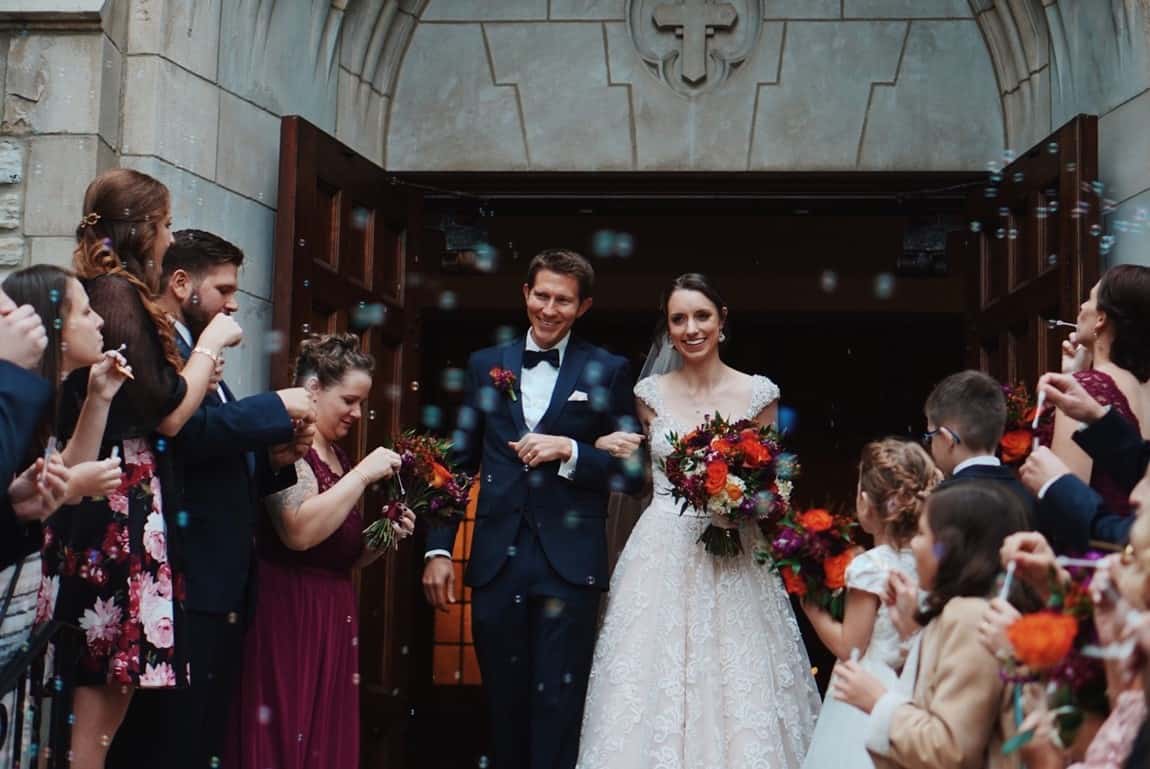
As the ceremony does not take place within a Mass, the officiant will proceed to conclude the ceremony immediately after the nuptial blessing.
- Blessing – the priest or officiant will ask the Lord to bless not only the newlyweds but everyone present in the ceremony. It is also at this part that the witnesses of the marriage will sign the marriage license.
- Dismissal – the officiant will dismiss everyone present with a “Go in peace and serve the Lord,” or a variation of it, to which everyone will respond with, “Thanks be to God.”
- Recessional – also known as the closing procession, the couple, the bridal party, and the officiant will exit the church. This is often accompanied by recessional music, which is upbeat and lively.
Catholic Wedding Ceremony With Mass
Besides the presence of the Liturgy of the Eucharist, wedding ceremonies observed during Mass have a few other subtler differences with wedding ceremonies observed outside of Mass.
The Procession
The procession in wedding ceremonies during Mass is done the same way as it is in wedding ceremonies outside of Mass.
The Invocation
After the priest greets the guests, the Gloria will be sung by everyone in the church. However, the Penitential Act will be excluded. Besides this difference, everything else in the invocation remains the same.
The Liturgy of the Word
The Liturgy of the Word in wedding ceremonies observed during Mass is identical to those outside Mass.
The Celebration of Matrimony
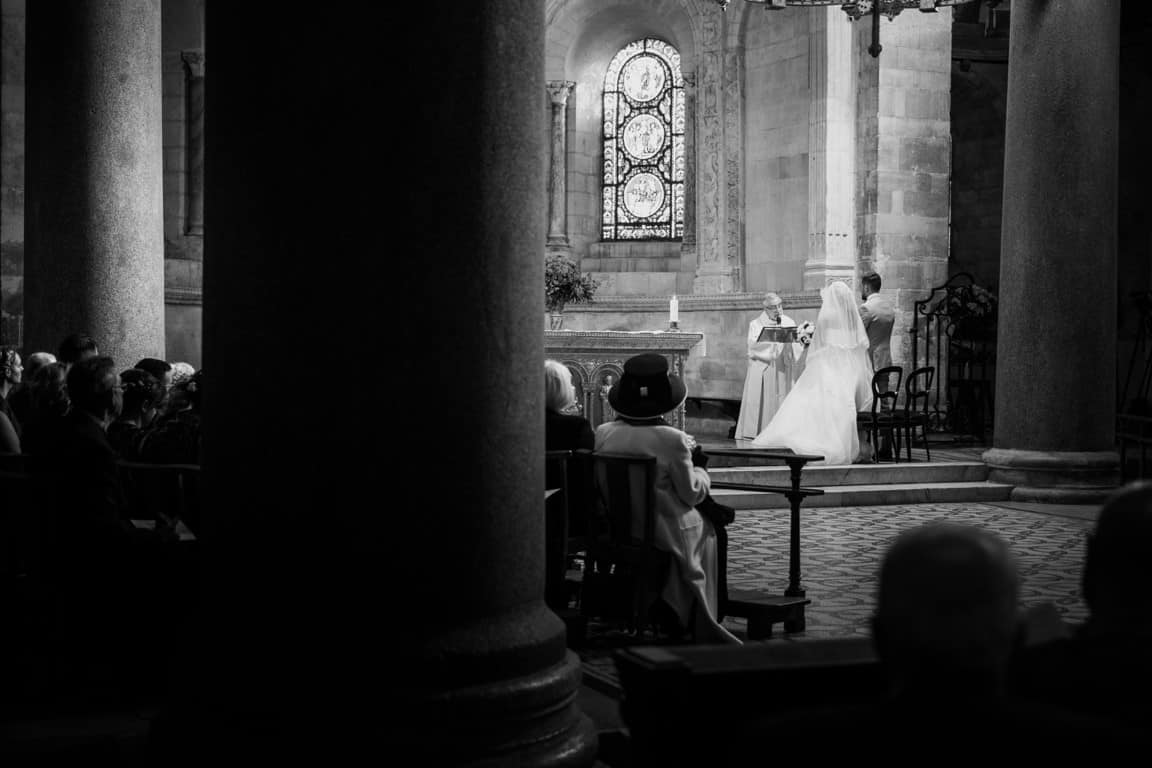
The celebration of matrimony in wedding ceremonies observed during Mass is shorter than that of those outside Mass. This is because some of the later parts are instead performed after the Rite of Communion. The celebration of matrimony in wedding ceremonies with Mass has eight parts:
- Questions before the consent
- Declaration of intent
- Exchange of vows (optional)
- Reception of consent
- Blessing and exchanging of rings
- Pronouncement
- Profession of Faith – everyone will recite the Nicene Creed (“I believe in one God. . .”) if the wedding ceremony is held on a solemnity or a Sunday.
- The Universal Prayer
The Liturgy of the Eucharist
The Liturgy of the Eucharist is the part of the Mass that encompasses the preparation and offering of the bread and wine. It has two parts:
- Offertory song – everyone sings the Offertory Song. Concurrently, the altar will be prepared for the bread and wine.
- Eucharistic prayer – everyone typically sings three acclamations:
- Sanctus (“Holy, Holy”)
- Memorial Acclamation (“The mystery of faith / We proclaim Your death, O Lord, and profess your Resurrection. . .”)
- Great Amen
Communion Rite
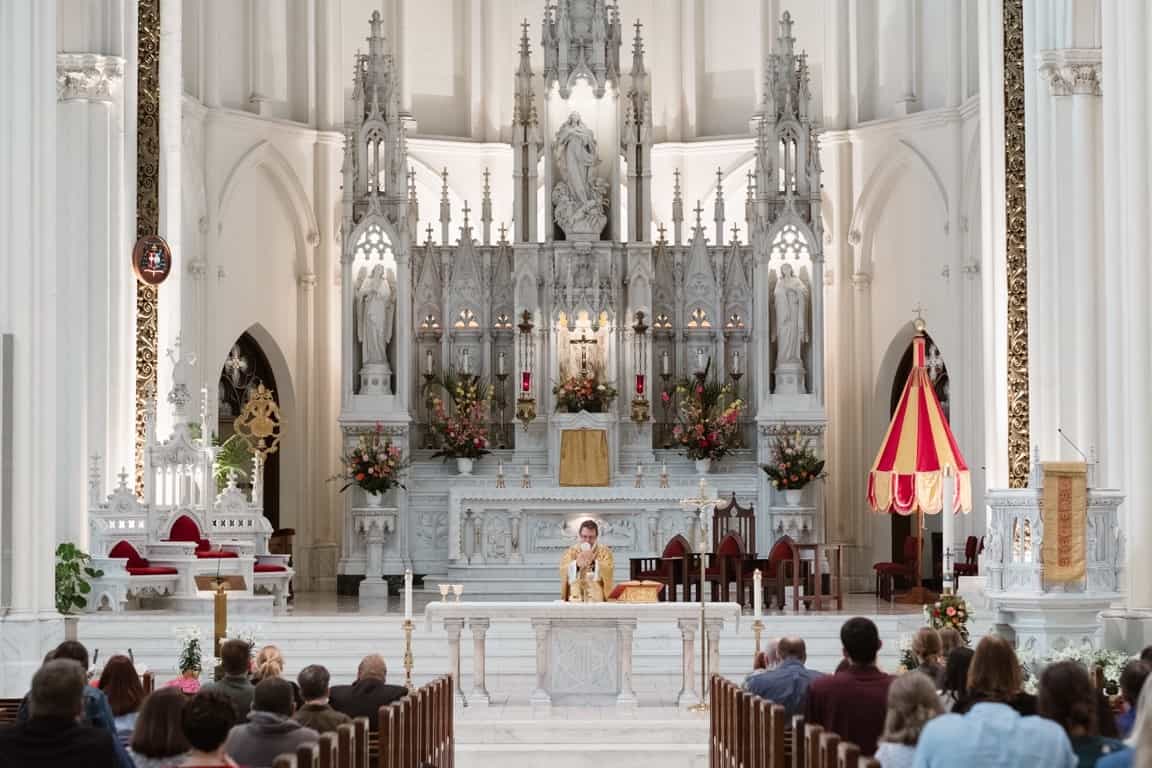
This is what makes wedding ceremonies during Mass longer, as the larger the guest count is, the more time it will take for everyone to receive the Holy Communion. All in all, the Communion Rite has five parts:
- The Lord’s Prayer
- Nuptial blessing
- Rite of peace – everyone gives those around them a sign of peace, which is usually a handshake accompanied by “Peace be with you.”
- Lamb of God – while everyone sings “Lamb of God,” the priest breaks the Eucharistic bread. After the song is finished, everyone kneels.
- Communion – everyone lines up to receive Communion. However, it must be noted that guests with a different religion cannot receive Communion.
The Conclusion
The conclusion of a wedding ceremony during Mass is identical to those outside Mass.
How to Decide if Your Wedding Ceremony Should Have a Mass
You and your partner’s religious affiliations will be the deciding factor.
If both of you are Catholic, then your ceremony should contain a Mass. Although it is not mandatory, Catholic couples mostly opt to have a Mass service during their wedding to make it more special and memorable. If for some reason, the wedding has to be rushed, then the service could be skipped altogether.
If one of you is not Catholic, your ceremony does not need to have a Mass. Due to the difference in religion, one would not be allowed to receive communion. You also have the option to modify the ceremony itself to have a mix of you and your partner’s religion, though this will significantly lengthen the proceedings up to an hour and a half.
Final Thoughts
So, how long are catholic weddings? While wedding ceremonies held without a Mass only takes 20 to 30 minutes on average, wedding ceremonies observed with a Mass can take 45 to 60 minutes. This difference in duration is due to the presence of the Liturgy of the Eucharist and the Communion Rite in wedding ceremonies with a Mass.